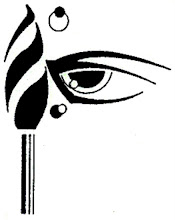“Living Sculpture,” a performance art presentation, created by artist Alpha Bruton, for the Abstract Expressions “Do You See What I See” opening reception at Gallery Guichard, April 11, 2019 reception.
Marielle Dickens, Chyanne Spencer, Bryonna Young
About Move Me Soul-
Move Me Soul is a Youth Dance Company founded by Ayesha Jaco in 2008. Move Me Soul is committed to providing an innovative platform for inner-city youth to train and evolve as the next generation of dancers, choreographers, and teachers. Performers are engaged in dancemaking, storytelling and character development that allows them to curate Inner-City Aesthetics of the past, present, and future.
Improvisational Sound by guest musicians-
This piece was last presented in its entirety during the Interfaith Concert for Peace at The Chicago Temple, Sunday, March 16, 2008.
Living Sculptures‖ is a performance art piece choreographed by artist Alpha Bruton, with music by the Ancestral Resurrection Ensemble. The living sculptures and dancer dramatize, through improvisation, a metamorphosis that symbolizes Christianity, Judaism, and Islam, and the spiritual ―CRY‖ for world peace. This is a cry of pain, love, and joy. It is not just the physical act of crying, but an inner psychic cry, the longing and hoping, and the giving of all you have.
Jazmin Bruton-Davis, Jazell Smith, Oafrikara Mysheallah Webber – living sculptures
Ancestral Resurrection Ensemble— Siddha Webber – vocals & percussion, Ray Mosley – guitar, Ben Montgomery – percussion, Duryving Ternoir – trumpet, and Eleni Vryza – dancer.
Interestingly enough, I studied dance at Fresno City College, the department chair was from the school of Martha Graham.
Martha Lamentation, 1935 introduced stretch fabric in the dance of Lamentation
What is a stretch bag? It’s like a human-sized pillowcase made of stretchy nylon and spandex. They have an opening either on the side or the top/bottom of the bag. On stage, we can make intriguing shapes that don’t look at all like the human body.
Lamentation premiered in New York City on January 8, 1930, at Maxine Elliot’s Theater, to music by the Hungarian composer Zoltán Kodály. The dance is performed almost entirely from a seated position, with the dancer encased in a tube of purple jersey. The diagonals and tensions formed by the dancer’s body struggling within the material create a moving sculpture, a portrait which presents the very essence of grief. The figure in this dance is neither human nor animal, neither male nor female: it is grief itself.
According to Martha Graham, after one performance of the work, she was visited by a woman in the audience who had recently seen her child killed in an accident. Viewing Lamentation enabled her to grieve, as she realized that “grief was a dignified and valid emotion and that I could yield to it without shame.”














